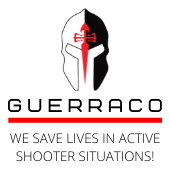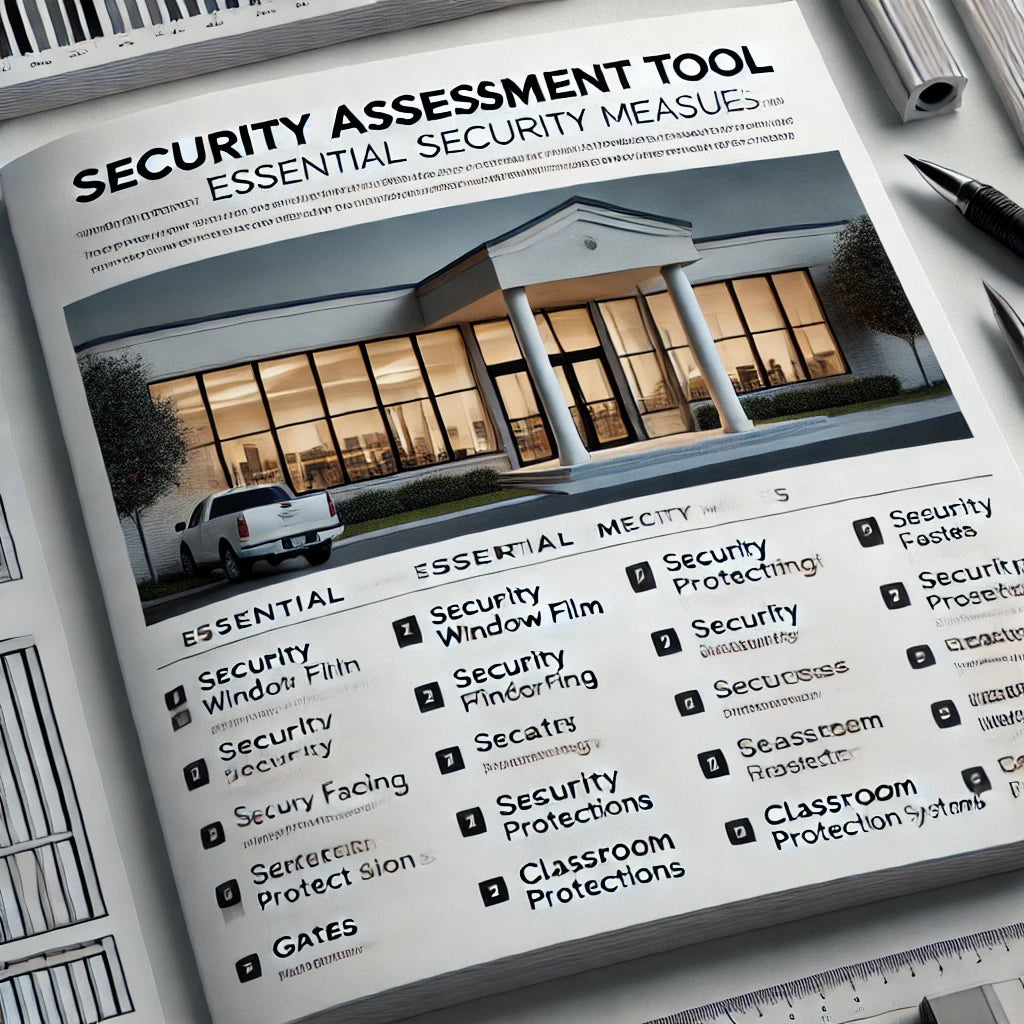In today's world, ensuring the safety and security of schools is more important than ever. Schools are meant to be safe spaces where students can learn and grow, but unfortunately, they can also be vulnerable to various threats. To help schools strengthen their security, the Cybersecurity and Infrastructure Security Agency (CISA) created the K-12 School Security Assessment Tool (SSAT). This tool is designed to help schools identify weaknesses in their security systems and provide recommendations on how to address them.
The SSAT is a powerful and detailed tool that covers a wide range of security aspects. It encourages schools to think about their security in a comprehensive way, considering everything from physical barriers to staff training and emergency response plans. However, while the SSAT is incredibly thorough, it might not always emphasize some of the most straightforward and effective measures that schools can take to protect against intruders and active shooters. These measures include security window film, security fencing, gates, and classroom protection systems.
In this blog post, we will explore how the SSAT works, why it's an essential tool for schools, and discuss some additional security measures that should not be overlooked.
What is the K-12 School Security Assessment Tool?

The SSAT is a tool specifically designed to help school leaders, administrators, and security teams evaluate the current state of their school’s physical security. It provides a structured approach that guides users through a series of steps to assess their security measures. The tool is organized around four key layers of security, which include:
-
Grounds Perimeter: This is the outer boundary of the school campus. It typically includes fences, gates, and other barriers that define the school’s property line and control access to the campus. The grounds perimeter is the first line of defense against unauthorized entry, making it a crucial component of any school’s security plan.
- School Grounds: This layer includes all the outdoor spaces within the school’s property, such as athletic fields, playgrounds, parking lots, and pathways. These areas are often accessible to both students and the public, so it’s important to ensure that they are secure and well-monitored.
- Building Perimeter: The building perimeter refers to the walls and doors that enclose the school buildings. This layer includes entrances, windows, and any other points of entry. Securing the building perimeter is vital to prevent unauthorized access and protect the people inside.
- Building Interior: The building interior encompasses all the spaces inside the school, such as classrooms, hallways, offices, cafeterias, and gymnasiums. This layer is where students and staff spend most of their time, so it’s essential to have security measures in place to protect against threats that may have breached the other layers.
By dividing the school into these four parts, the SSAT makes sure that schools think about how all the different security measures work together. The tool also covers different emergency scenarios, like an active shooter or a student fight, and gives advice based on the school’s needs.
The SSAT encourages users to think about security in a holistic way, considering not just physical barriers but also policies, training, and coordination with local emergency responders. For each of the four layers, the SSAT asks users to input information about the security measures they currently have in place. It then analyzes this information to identify any gaps or weaknesses in the school’s security system.
One of the key features of the SSAT is its ability to provide tailored recommendations based on the school’s specific circumstances. For example, a school in an urban area with a high crime rate may need different security measures than a rural school with fewer external threats. The SSAT takes these factors into account when providing its recommendations.
Another important aspect of the SSAT is its focus on systems-based security. This means that the tool doesn’t just look at individual security measures in isolation but considers how they work together as part of a broader system. For example, a security camera might be very effective at monitoring an area, but it’s only useful if someone is watching the footage in real-time or if there’s a plan in place to respond to incidents captured on camera.
The SSAT is Great, But It Misses Some Simple Solutions
The SSAT is undoubtedly a powerful tool that can help schools make informed decisions about their security. Its comprehensive approach ensures that schools consider all aspects of their security system, from physical barriers to emergency response plans. The tool’s ability to tailor its recommendations to the specific needs of each school makes it even more valuable.
However, the SSAT might not always emphasize some of the most straightforward and cost-effective measures that can significantly enhance a school’s security. These measures are often simple to implement and can provide an immediate increase in safety. In the rush to implement advanced technology or complex security systems, it’s easy to overlook these basic yet crucial steps.
For instance, while the SSAT might recommend enhancing access control systems or increasing the number of security cameras, it may not highlight the importance of installing security window film on ground-floor windows. This simple measure can make it much harder for an intruder to break into the building, buying valuable time for law enforcement to respond. Similarly, the tool might not stress the importance of having strong perimeter fencing and gates that can prevent unauthorized individuals from entering the school grounds in the first place.
Another example is classroom protection systems. The SSAT might suggest various measures to secure the building interior, but it’s essential to remember that classrooms should be the last line of defense. Installing reinforced doors, automatic locks, and barriers that can be quickly deployed in the event of an emergency can make a significant difference in protecting students and staff during an active shooter situation.
These measures are not just about adding layers of security; they are about ensuring that the existing layers are as effective as possible. While advanced technology and complex systems are important, they should not replace simple, practical solutions that can have a big impact.
Important Security Measures Schools Should Also Consider
Security Window Film:- One easy way to make schools safer is to put security film on all ground-floor windows and glass doors. This film makes it harder for intruders to break the glass and get inside, giving the police more time to arrive. Security window film is a relatively low-cost solution that can be quickly installed without disrupting school operations. In addition to slowing down intruders, it can also protect against the dangers of shattered glass in the event of an explosion or other impact.
- The importance of securing windows cannot be overstated. Windows are often one of the most vulnerable points in a building’s security system, especially on the ground floor. While doors are usually equipped with locks and other security features, windows are often overlooked. Security window film provides an additional layer of protection, making it more difficult for an intruder to gain access to the building.
- Strong fences and gates around the school can keep out people who shouldn’t be there. These barriers also help direct visitors to the right entrance, where they can be checked in properly. Fencing can be an effective deterrent against unauthorized entry, especially when combined with controlled access points that require visitors to be screened before they enter the campus.
- Fencing and gates are particularly important for schools located in high-traffic areas or neighborhoods with higher crime rates. By clearly defining the school’s boundaries, these physical barriers help create a secure environment where students and staff can feel safe. Additionally, well-designed fencing can complement other security measures, such as surveillance cameras, by making it easier to monitor who is coming and going from the campus.
- It’s also worth noting that security fencing and gates are not just about keeping people out—they can also help control the flow of people within the school grounds. For example, fencing can be used to separate different areas of the campus, ensuring that students remain in designated zones during school hours. Gates can be strategically placed to control access to specific buildings or areas, further enhancing the school’s overall security.
Classroom Protection Systems:
- It’s really important to make sure classrooms are secure, especially if there’s an active shooter. Schools can install things like reinforced doors, automatic locks, and barriers to protect students and teachers. These systems provide a last line of defense, ensuring that students and staff have a safe place to take shelter in the event of an emergency.
- Classroom protection systems are an essential component of any school’s security plan. In the event that an intruder does manage to breach the outer layers of security, classrooms should be equipped to provide immediate protection. Reinforced doors and automatic locks can prevent an intruder from entering a classroom, while barriers such as bullet-resistant panels can provide additional protection for students and staff.
- Beyond physical barriers, classroom protection systems can also include communication tools that allow teachers to quickly alert authorities and other staff members in the event of an emergency. For example, some schools have installed panic buttons or intercom systems that can be used to notify the entire campus of a threat. These tools can be crucial in coordinating a rapid response and ensuring that everyone on campus is aware of the situation.
To assess your school on this critical security measures, take the Active Shooter Defense Assessment.

